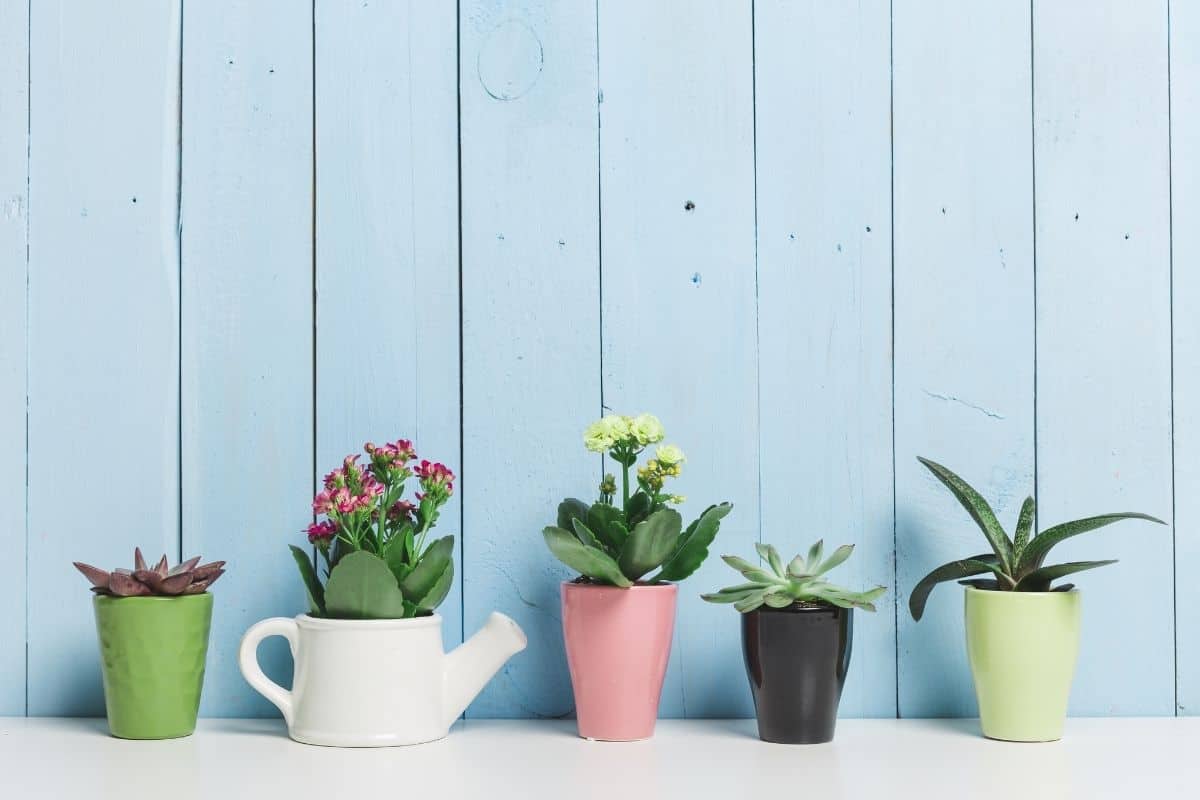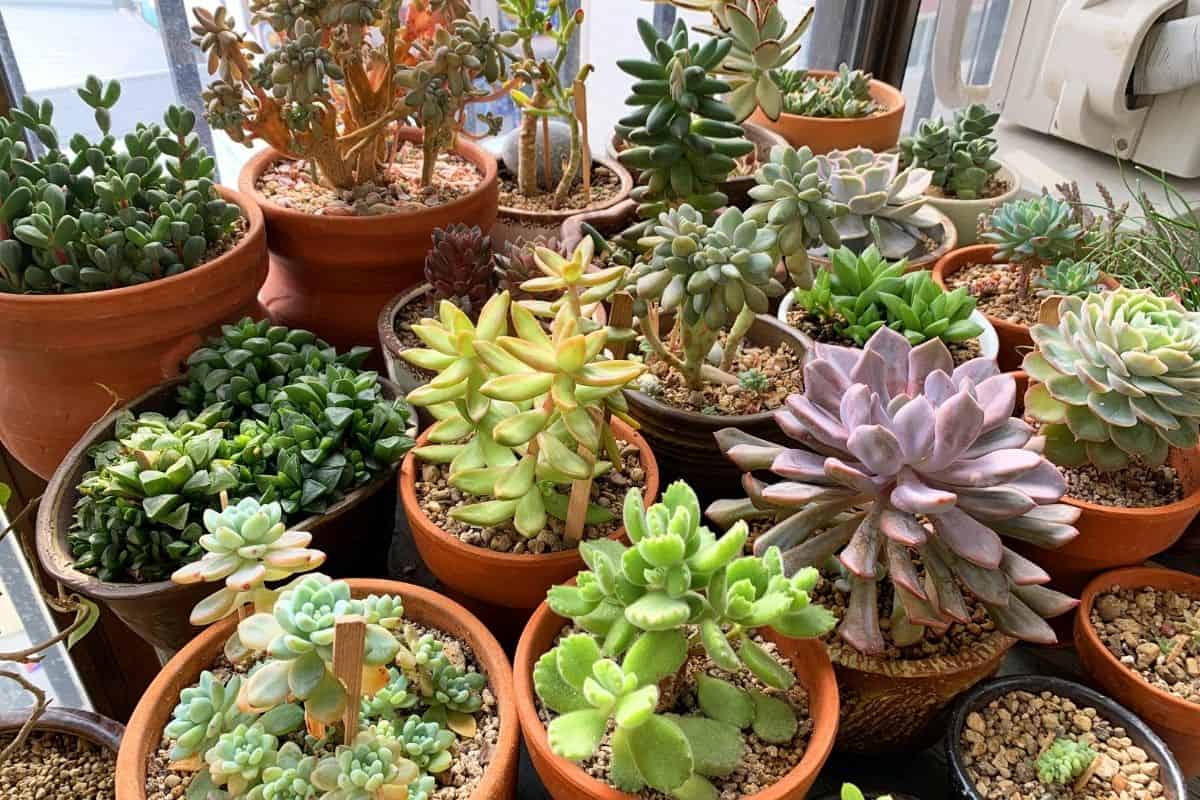
Not many people appreciate succulents for their blooms. Instead, most succulent growers consider the main rosette itself its source of beauty. Moreover, not all succulents flower. Some of those that do, however, die afterward, hence the phenomenon called succulent death bloom.
If you are curious to know more about this, you have come to the right place. However, please note that what this post will not discuss is the general life cycle of succulent plants. We have another post dedicated to learning how long succulents live. It also won’t cover the other reasons why succulents die.
Jump to:
About Monocarpic Succulents
The first thing we want to talk about is monocarpic plants. Monocarpic species are plants known to flower only once and then wither away after. These are not limited to succulents alone. There are other monocarpic plants out there, such as sunflowers, cabbages, and tomatoes.
This occurrence does not mean that monocarpic plants have very short lifespans. Many of them actually live for several years一some, even decades一before they finally bloom and die.
The scientific term monocarpic comes from two Greek words: mono (single) and karpos (fruit). From this, we can conclude that these plants flower to produce seeds. Once it does, its main purpose in life is complete and, therefore, dies out.

What’s interesting about monocarpic succulents is the fact that not all of their deaths are final. One good example is the Sempervivum, where the main plant or hen dies out after living for three to four years. However, the result probably would not even be that noticeable. Before this happens, it has already potentially produced dozens of baby plants or chicks.
Succulent Death Bloom: What Is It?
This event of flowering and dying is commonly referred to as the succulent death bloom. To be more accurate, look at it as a natural process of seed production. It happens when the monocarpic succulent undergoes hormonal changes that redirect the efforts of the plant from survival to seed production. It will then cause the mother plant to wilt eventually.
No products found.
Most monocarpic succulents only produce a single bloom stalk that shoots up from the center of the plant. It shouldn’t be mistaken for etiolation, a phenomenon brought about by light deprivation. Also known as legginess, etiolation happens when the stem of the mother plant itself gets elongated.
On the other hand, only the flower stalk elongates in a succulent death bloom. This bloom of death will then grow vertically and produce tiny blooms. Once they finish blooming, the succulent itself can potentially wither away. By potentially, we mean that there are succulents that don’t completely die out, as we have mentioned above.

When Do Succulents Die After a Death Bloom?
The answer will mainly depend on two factors. It depends on the type of monocarpic succulent you have and how long your succulent plant blooms. In our experience, it can happen between a few days to a few weeks.
Do All Succulents Die After Flowering?
No, not all succulents die after flowering. Succulent death bloom only happens to monocarpic succulents. Those that do not have the same seed production process will not die even after flowering. In fact, most flowering succulents can produce and bloom multiple flowers yearly without any consequence.
However, you can expect the regular flower stalk to wilt away after blooming. When they do, you can simply prune these dead stalks off your plant. These succulent plants are polycarpic, where poly means many.
No idea if your healthy plant will die soon after its blooming season? The best way to know is to determine what type of succulent it is before you start worrying. Also, as stated, a lot of monocarpic succulents are long-lived plants. It’s just that, as with any other living thing, it will die once it has completed its plant life cycle.
For us, the only succulents at risk of dying soon are overwatered plants. After all, being waterlogged and suffering from root rot are the main weaknesses of any succulent, monocarpic or not.
What Does a Succulent Death Bloom Look Like?
Death bloom succulents usually grow a long flowering stalk from the apex or center of the plant. The length of this stalk can vary according to the type of succulent you have. Our rosettes with death blooms usually have stalks around seven to 12 inches long. Meanwhile, we have heard of larger species, like the Agave americana, growing death blossom stalks up to 30 feet high.
As for the flowers themselves, most of our death blossoms had warm colors of yellows, oranges, and pinks. There were also rare occurrences when they were really light and bright that they looked almost white.
Lastly, there are succulent varieties that grow flowers in between its leaves. This form of growth resembles a cone-like pattern of sorts until the stalk eventually slenders down as it reaches the top. In some cases, the entire look of the plant will even change completely. It can be quite exciting, especially if it’s your first time witnessing this growth pattern.
Can a Succulent Death Bloom Be Avoided?

Technically, yes, you can avoid a succulent death bloom. However, the process won’t bode well for your plant. The only way to stop a succulent death bloom is to weaken the growth pattern of the plant in a way that will keep it from flowering and reproducing.
We have also tried cutting the bloom stalk in the past, just to see if it will work, but to no avail. The succulent still produced pups where we have severed the flowering stem. Needless to say, our plant still died after the process.
We have heard of ways to slow down the periods of growth of a plant, but we haven’t tried those ourselves. We love our succulent plants too much to keep them from reaching their best potential.
In the end, there really is no way to avoid a succulent death bloom from happening. The best way to deal with it is to simply accept this chapter of their lives and make the most out of it. In fact, we even look forward to it now since it is a period of much growth.
We have come to appreciate the plentiful pups our monocarpic succulents produce and do our best to care for them long after the mother plant has died. In this way, it won’t really feel like a tragedy at all.
Succulent Death Blooms Are a Good Sign
Succulent death bloom is a process where the plant dedicates all its energy to seed production to the point that it will eventually die after the flowering stage. We understand why a succulent blooming to its death can be quite distressing for new growers who didn’t even expect it to happen.
That said, we believe it shouldn’t be avoided nor viewed as a sad occurrence. Instead, it is a sign that your succulent is thriving under your care, so much so that it has decided to further multiply on its own.
There are a lot of monocarpic succulent plants that don’t even reach their flowering stage, even with the effort and care provided to them. Hence, if your succulent has entered this part of its life cycle, we strongly believe that it should be celebrated. It’s a sign that you’ve been a great grower after all these years.

